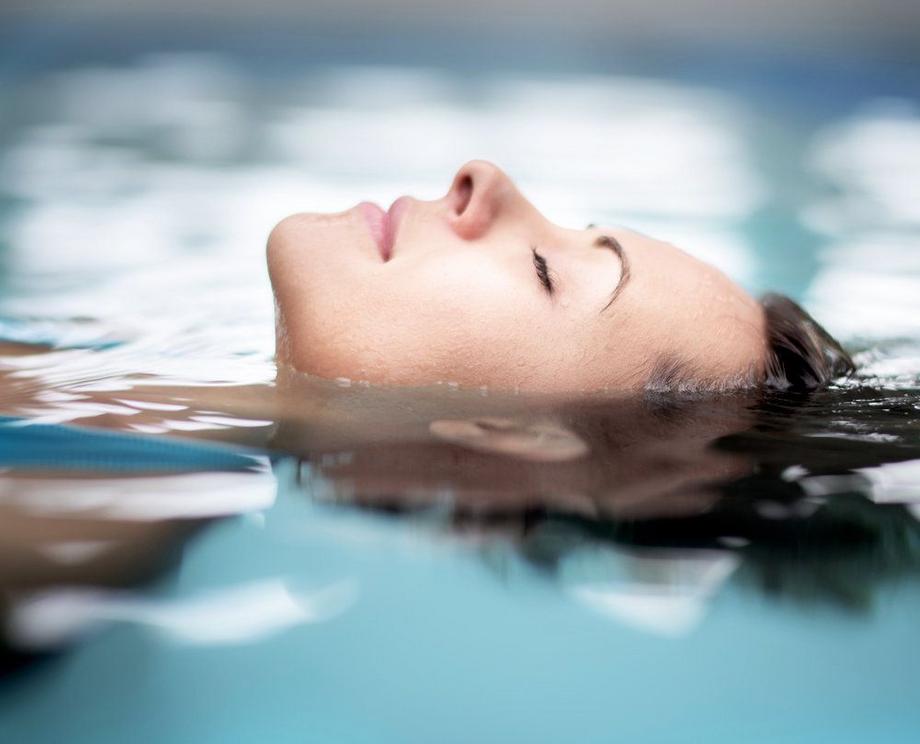Hydrotherapy
Hydrotherapy is an oddball assortment of ways to use water to relieve pain and assist rehabilitation from injury, mostly by heating and cooling. Methods range from conventional to kooky, and many seem quaint and old-school today, strongly associated with early physical therapy and the spa retreats that thrived about a century ago.
But hydrotherapy is far from dead — you're doing it every time you have a hot bath or put an ice pack on a sprained ankle; strong full-body cryotherapy is trendy in sports right now; and many people have done injury rehab in a pool. Most people already practice simple hydrotherapies, and can upgrade with just a little education.
Why water?
Most hydrotherapy is thermoregulatory: it's used to change our temperature, because water is a particularly handy way to heat and cool the human body. Manipulation of circulation, inflammation, and pain neurology with temperature are the most common goals of hydrotherapy.
But water is versatile stuff, and can be used in several other ways:
- for supported exercise (aquajogging, water aerobics)
- to apply pressure (water jet massage)
- to support and/or resistance during exercise
- for relaxation (immersion and floatation therapy)
- to expose large areas of skin to a substance (Epsom salts)
- as a conductor of electricity! (galvanic baths)
- And there are several more medical uses of water, such as wound cleaning and burn treatment.
Is hydrotherapy effective?
There are so many forms of hydrotherapy that it's impossible to generalize. They range from rank quackery to sensible mainstream medicine — each one has to be considered on its own merits. I get deeply into the science of heating and cooling in a series of several articles, as well as some of the other most popular hydrotherapies — lots of links at the bottom of this page.
I can safely say that most hydrotherapies are quite safe. They are also mostly simple, inexpensive, and are probably at least a little bit helpful because they are pleasant and even fun — and pleasant, fun things are inherently good for pain. No hydrotherapy is a miracle cure for anything, but it is a treatment approach that every chronic pain patient should have in their toolkit.
Helping out the body
The body is constantly trying to warm itself up and cool itself off. Sometimes it appreciates some help.
A lot of our physiological energy is devoted to the temperature balancing act. The whole system for temperature control is complex and amazingly effective. Unfortunately, it also isn't perfect: we can't always maintain an ideal temperature. We routinely use showers, baths, fires, fans, and even hot or cold foods to help with thermoregulation.
We struggle more with temperature control when we are sick or damaged, and so hydrotherapy is more helpful at those times. An obvious example is a cool bath when suffering from heat exhaustion. Hydrotherapy treatments that seem unremarkable when you are healthy can be surprisingly potent when your system is challenged by infection or fever.
Taking the edge of inflammation
Easing inflammation in particular is another reason for the broad healing powers of hydrotherapy.
The process of inflammation always occurs with any injury — you know it by the pain, swelling, heat and redness. It is a normal response to any kind of tissue damage, and you couldn't live without it. However, the body often over-reacts to trauma, sometimes quite dramatically, which can be painful and counterproductive. Inflammation can also be exaggerated everywhere by various factors. Just a little simple cooling for excessive inflammation can be a huge relief, and is much safer than over-the-counter pain medications (which have many notorious side effects). Warmth can also be soothing for diffuse low-grade inflammation.
Unfortunately, many people still rush to put a hot pack on a fresh injury, especially muscle strains. Except in a few special cases, this is an error. Never heat a fresh injury — you'll make it worse, not better, because you will aggravate the inflammatory process, making it much more uncomfortable. And with some conditions, like back pain, it can be surprisingly unclear if the problem is an injury or not.
Moving blood around as a tonic
The stimulation and control of circulation is one of the main reasons that hydrotherapies may be healthful. The circulation of blood is the main way that the body regulates temperature. Therefore, it is possible to use hydrotherapy to manipulate and temporarily, significantly increase circulation.
Is circulatory stimulation beneficial by itself? No one really knows, but it probably constitutes a mild form of exercise — literally flexing countless peripheral blood vessels — and that's especially beneficial if your ability to exercise is limited (by pain or injury, say).

